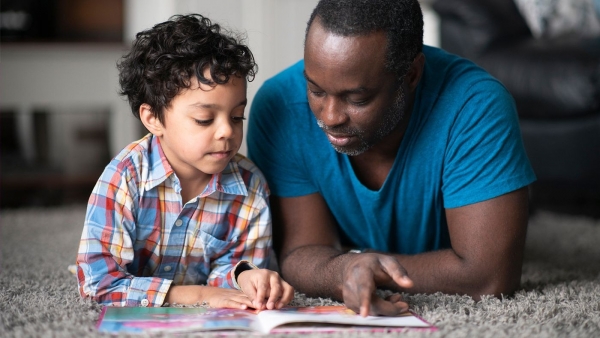We wondered how we would form and sustain relationships with both students and families without being physically close to them. As educators, we have all had to turn, change, spin around, and stand on our heads to keep our students focused and engaged. Teachers are not really great with change. We all like the structure and routine of our jobs.
So how do we teach our future leaders while maintaining the consistency and routine of our in-person classroom structure? It’s difficult but not impossible.
Prior to the start of the school year for prekindergarten, my school hosted trust visits. We normally would have called this parent orientation, but the times and needs had changed. My heart broke when I couldn’t hug a new student or extend my hand to them. As I sat with my mask on, I wondered if the families knew how happy I was to be there and that my covered smile was so big. I wondered if the families felt as scared as I did, but as soon as I met the children and their families, all of that worry, fear, and despair melted away.
For teachers, nothing is more important than the connection we make with our students and their families. The meetings were hosted outside of the school, in the courtyard, and we observed social distancing. After every family visited, we sanitized and disinfected. The families were thrilled to be visiting the school, even if it was outside.
I made a connection with each child and their parents. This was the only thing that mattered—not that I had to wear a mask, or that it was cold and windy outside, but the fact that students were excited and happy to come to school in any form.
One of my coworkers wore a pin with her picture on it so that the children could see her face without the mask. That was an amazingly personal way to connect with students and families. I had cards ready for parents with my cell phone number (a Google number just for school), my email address, and our Zoom meeting identification number. This would make it much easier for the parents to have all of the information they needed every day, all in one place.
We gave each family a tutorial on their newly acquired iPads. Every family was so very appreciative and grateful that their child could experience school for the first time.
COLLABORATING WITH COLLEAGUES AND STUDENTS’ FAMILIES
During this time of virtual teaching, it has become apparent that teachers need to lean on each other. I collaboratively work with four other prekindergarten teachers. We work on our virtual lesson plans together via Google Docs. We’re also working together to host a monthly parent Zoom meeting to help us better serve our students. The parents have become mothers, fathers, and teachers during the pandemic. Parents are always their child’s first teachers, but not in the way that has been thrust upon them now.
It’s our job as educators to support both the parents and the students. It really does take a village, and we cannot virtually teach young children without the assistance of an adult family member. The monthly Zoom meetings will help encourage parents to be involved, to read, and to understand the expectations for our smallest students. These meetings will shape how we teach and how we interact with both students and families. Conversations with parents help us to learn so much about the child.
Our job is to teach but also to nurture and care about all of a student’s needs, not just academics. During one of my Zoom class meetings, a student was wearing his winter jacket and a hat. I asked why he was dressed in such a way, and he proceeded to tell me that he was cold because he had no heat in his house. How can a child learn if he is cold, hungry, or without a place to live? Teachers need to be cognizant of the needs of all students and their families. What happens at home affects a child’s learning and vice versa.
At the beginning of the pandemic, our community was the epicenter for the virus in Massachusetts. Many of my students’ families were sick and hospitalized. Parents were out of work with no pay because some were undocumented. I searched within myself during this time to figure out how I could make a difference in the lives of my students. My assistant and I started contacting families daily to see what they needed. Some families needed food, diapers, toilet paper, cleaning supplies. I often dropped supplies off to families in my class on a weekly basis.
As you venture through this rocky, wild time in education, know that you are making a difference in every way to your students and their families. Know that you can be that small flicker of hope for a child each and every day. Learn about each child. Listen to what they say, and pay attention to what’s happening around them. Make calls frequently to families to help build and continue a trusting relationship. Respect and honor a child’s culture, language, and being. Promote that atmosphere in your classroom.
I end each day with this thought to instill in my 3-, 4-, and 5-year-olds: “Spread love and kindness wherever you go!” When a child is smiling, and they tell you it’s because they’re in school, is there any better gift?
By Kristin Faiella








